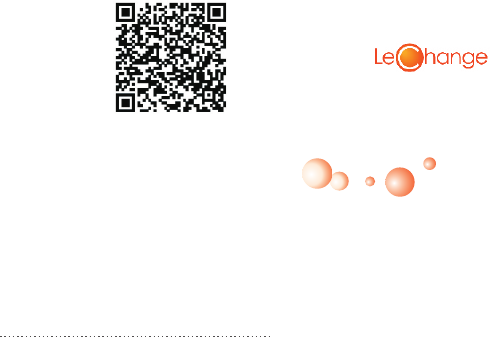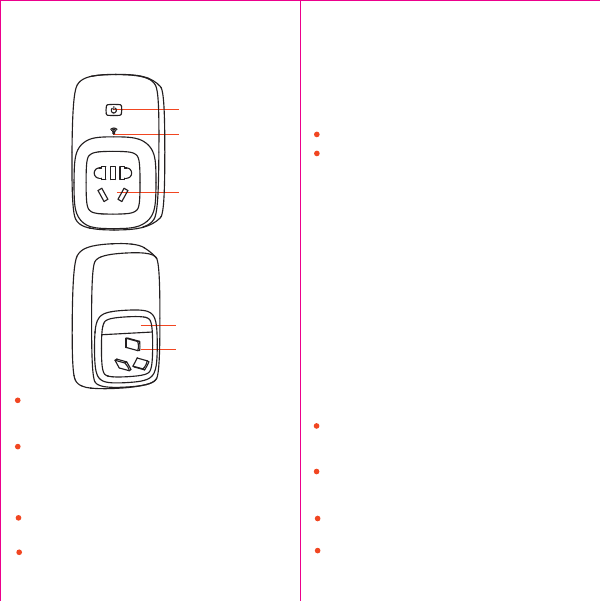Zhejiang Dahua Vision Technology DHCEZ100 Wireless Remote Control Outlet, Smart Outlet User Manual
Zhejiang Dahua Vision Technology Co., Ltd Wireless Remote Control Outlet, Smart Outlet
User manual

Wireless Remote Control Outlet
Quick Start Guide
☆
Download App
Please contact the service engineer or your local retailer
if there is any problem.
Specifications
Rated Voltage AC110V-220V, 50Hz
Max Current 10A
Rated Power Consumptions <2W
Working Temperature -5℃-+45℃
Working Humidity ﹤90%
Dimensions (mm) 130*65*55
Use your cell phone
to scan the QR on
the right side or go
to the App market
an d th e n se a rch
Le .Change
Zhejiang Dahua Technology Co.,Ltd
No.1199 Bin an Road, Binjiang District, Hangzhou, China, 310053.
Website: www.lechange.cn.
’

Thanks you for using our product
Features
General power consumption statistics.
Smart on/off.
Quick Setup
You can use this series product to control the
device on/off status remotely, track device running
st atu s, colle ct powe r con sum pti on st ati sti cs,
schedule boot up and shut down the device.
Please follow the steps listed below to pair the wireless
remote control outlet and the LeBox up.
Step 1
Open the software management interface and then
select Add device button.
Step 2
Please read the quick star t guide carefully before
you use this series product!!
Press it manually to turn on/off the device power.
Press it for a long time (About 6 seconds) to pair.
Power button
Indicator light
The blue light is flashing quickly when it is in pair
mode.The blue light is on if the connection is OK.
The yellow light is on if the pair is OK but here is
no network.
Socket
Insert the power socket.
Fuse cover
Open it to replace fuse.
This quick start guide is for (including but not limited to)
RC1 and DH-CE-Z100 series product.
Pin
Fuse Cover
Socket
Indicator Light
Power Button
Power consumption statistics
Remote boot up and shut down
Schedule boot up and shut down
Countdown boot up and shut down
On the client, it can collect the device power consumptions
connected to the outlet.
On the client, you can boot up or shut down the device
remotely.
On the client, you can set boot up and shut down time.
On the client, you can set device boo up and shot down
countdown time.
Functions
Press the Pair button for about 6 seconds; you can go
to the pair mode. Now you can see the blue indicator
light becomes flashing quickly. The light becomes on
after the pair process is successful. You can view the
pair is successful on the LeBox and the device is
added to the wireless remote control outlet category.
FCC Compliance Statement
2. The users manual or instruction manual for an intentional or unintentional radiator
shall caution the user that changes or modifications not expressly approved by the party
responsible for compliance could void the user's authority to operate the equipment. In
cases where the manual is provided only in a form other than paper, such as on a
computer disk or over the Internet, the information required by this section may be
included in the manual in that alternative form, provided the user can reasonably be
expected to have the capability to access information in that form.
1. This device complies with Part 15 of the FCC Rules. Operation is subject to the
following two conditions: (1) this device may not cause harmful interference, and (2) this
device must accept any interference received, including interference that may cause
undesired operation.
3. (b) For a Class B digital device or peripheral, the instructions furnished the user shall
include the following or similar statement, placed in a prominent location in the text of the
manual:
NOTE: This equipment has been tested and found to comply with the limits for a Class B
digital device, pursuant to Part 15 of the FCC Rules. These limits are designed to provide
reasonable protection against harmful interference in a residential installation. This
equipment generates, uses and can radiate radio frequency energy and, if not installed
and used in accordance with the
instructions, may cause harmful interference to radio communications. However,
there is no guarantee that interference will not occur in a particular installation. If this
equipment does cause harmful interference to radio or television reception, which can be
determined by turning the equipment off and on, the user is encouraged to try to correct
the interference by one or more of the following measures:
-- Reorient or relocate the receiving antenna.
-- Increase the separation between the equipment and receiver.
-- Connect the equipment into an outlet on a circuit different
from that to which the receiver is connected.
-- Consult the dealer or an experienced radio/TV technician for help.